Bread and circuses
I had been told the El Djem Colosseum was spectacular so I thought I’d make the three and a half hour trip down from Bizerte to have a look. After surviving the drive, I checked in to a hotel just a short walk away from the famous ruins.
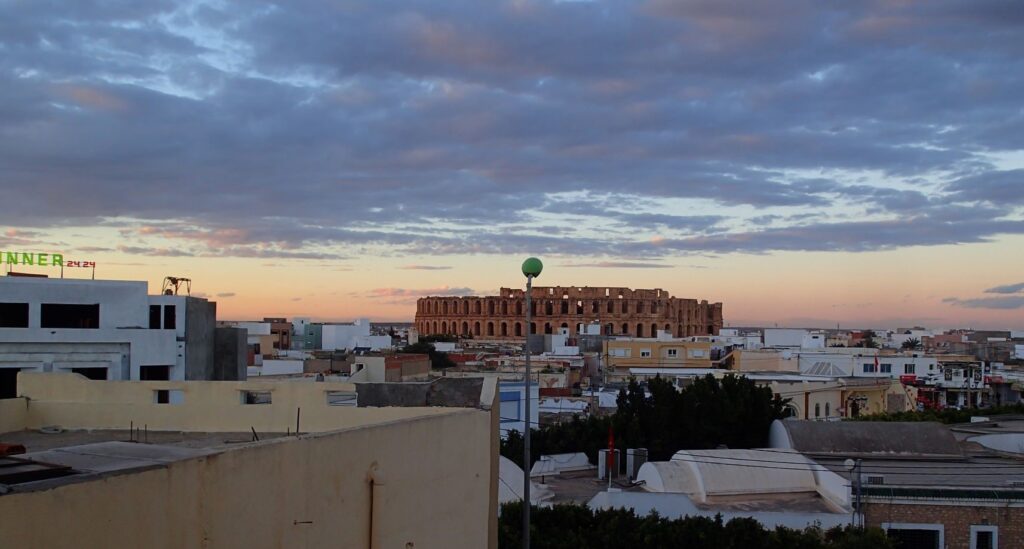
Next morning I sat alone in the hotel restaurant (I was the only tourist staying in the hotel…come to think of it I was probably the only tourist staying in the whole town) and ate the enormous breakfast I was served, which included salami, omelette, olives, bread, cheese, salad, halva, cake, yoghurt and a croissant. I thought that ought to fuel me through a few hundred years of Roman history. Or at least get me to lunchtime.
A short walk through the dusty chaos of El Djem and I was standing outside the 1800 year old structure. I paid my 12 dinar (6AUD) admission and walked into the towering ruins.
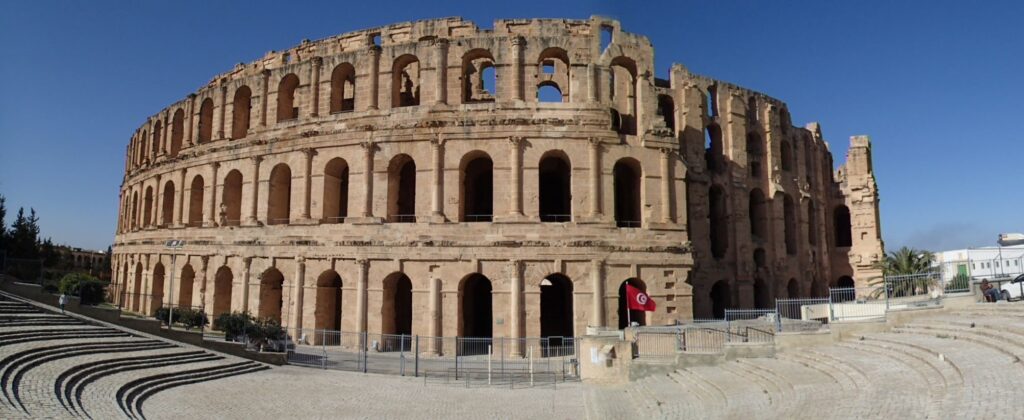
In the Roman times, El Djem was known as Thysdrus, and was a prosperous place due to its ability to pump out top shelf olive oil. The building of the Colosseum, which could hold 30,000 spectators, is testimony to the status of the town.
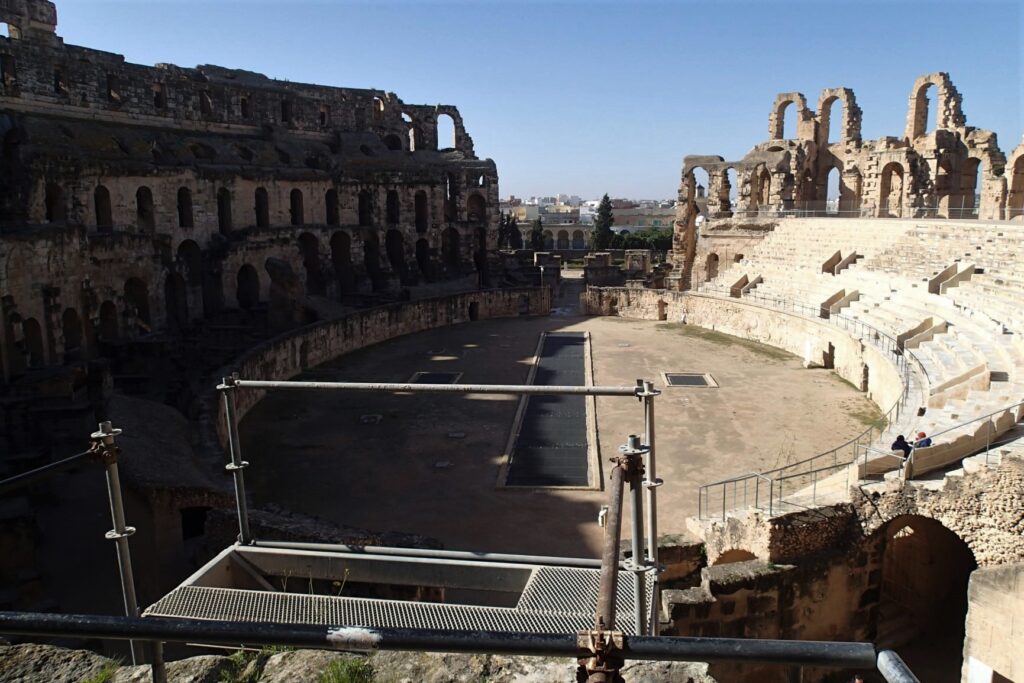
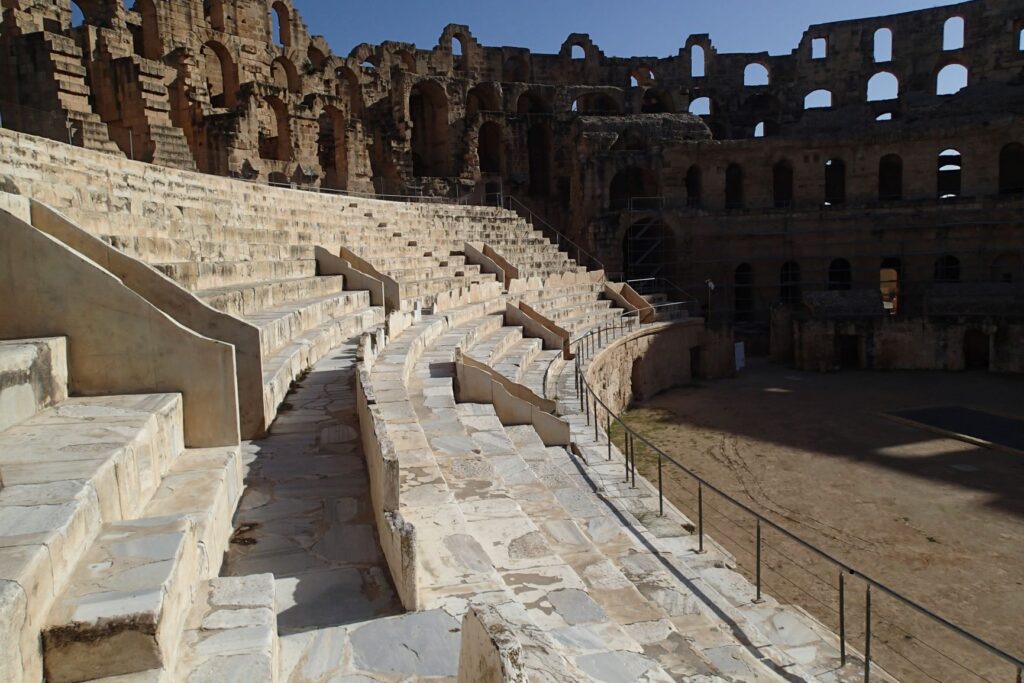
Over the years the stadium would have hosted some fantastic spectacles, including gladiatorial fights to the death, man versus beast rumbles, the execution of criminals, the Thysdrus 500 chariot race, and the tearing apart of Christians by wild animals. Those Romans sure knew how to have a good time.
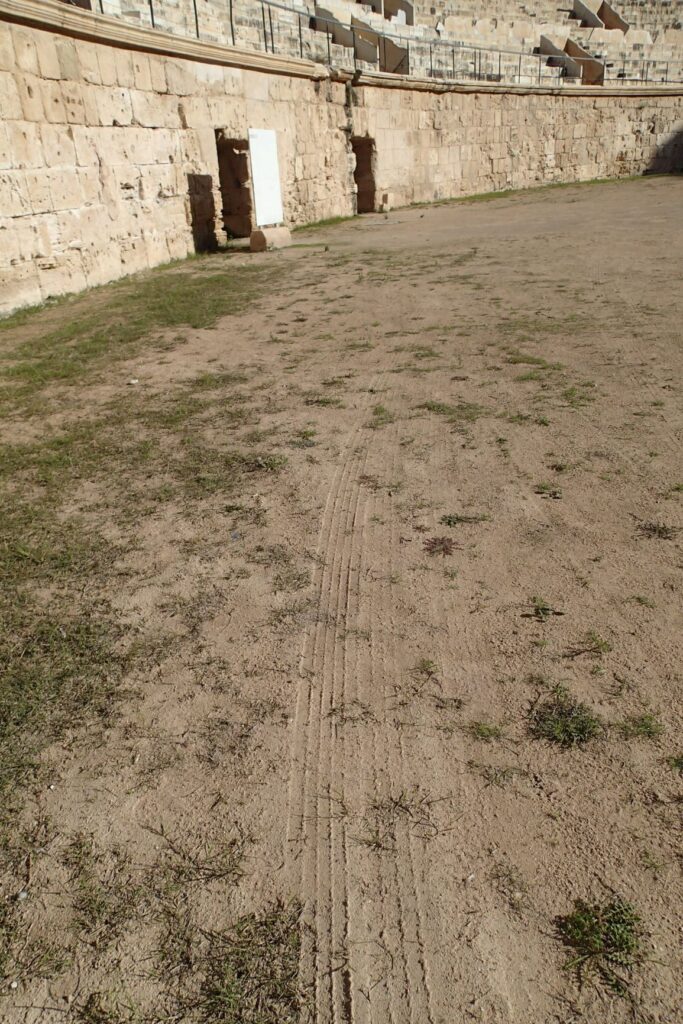
It was amazing to be able to go down into the corridors, rooms and gloomy cells in the basement of the arena. These were the areas where the performers, both those willing and those a little less so, were housed.
Still, all good human torture and brutality must come to an end, and with the disintegration of the Roman Empire, different uses were found for the Colosseum. Over the years it served as a fortress, and then a source of building materials for the emerging town of El Djem. During WWII, the British bombed the place and the German soldiers seeking refuge inside.
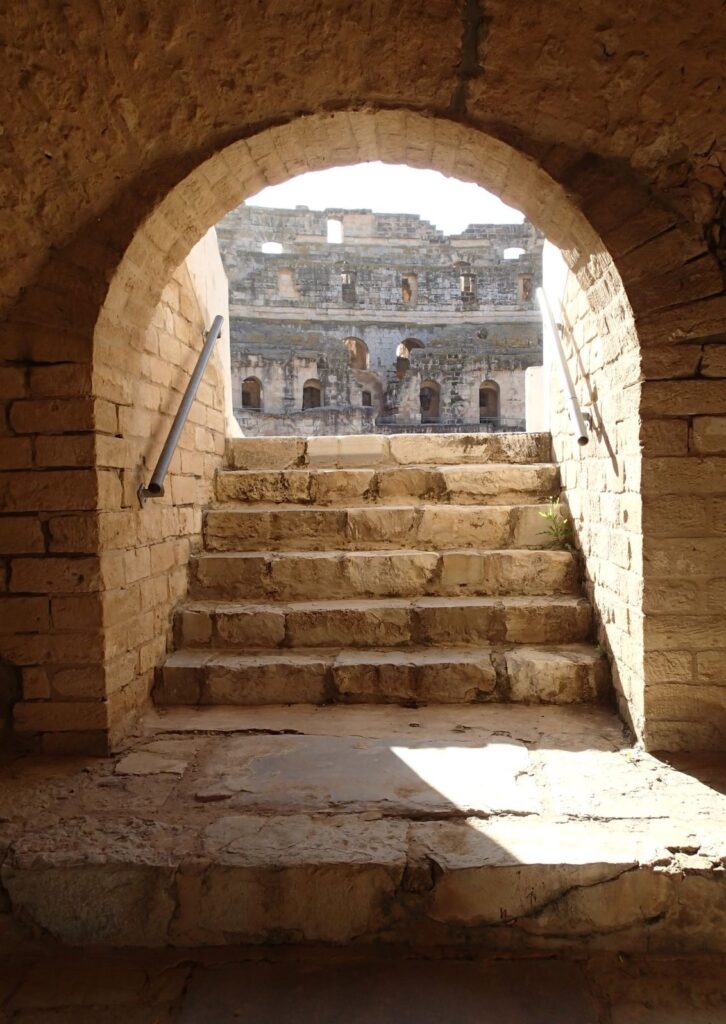
Considering all this, the El Djem Colosseum is still in pretty good nick. Ongoing restoration since the mid-70s has stabilised the ancient building, and you get a great feel for what the place would have been like in the glory days.
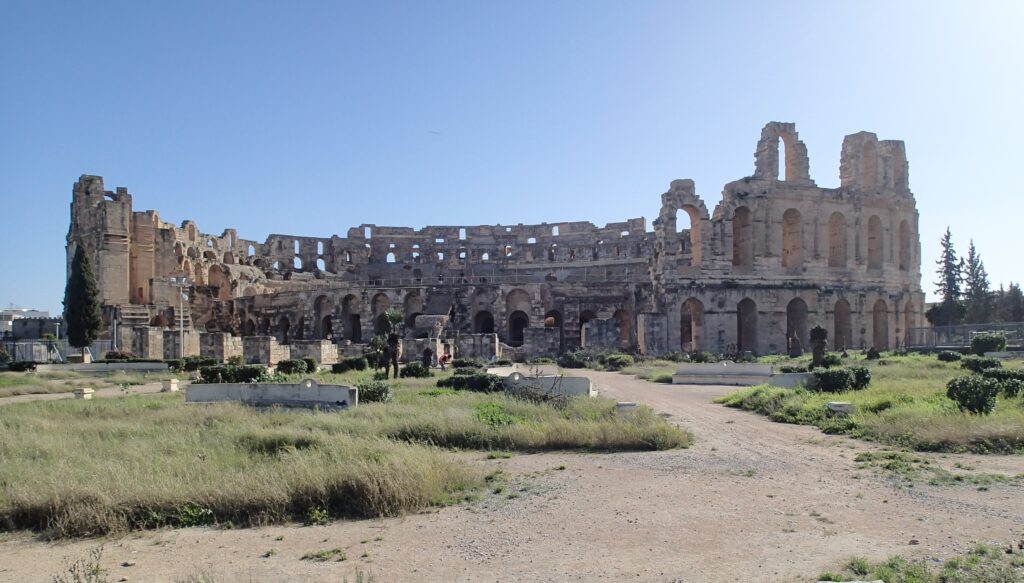
My breakfast did get me though the morning, but after wandering the Colosseum I had worked up an appetite. Travelling in the Corona era does have its advantages, and I got a prime seat at a cafe for lunch overlooking the ruins.
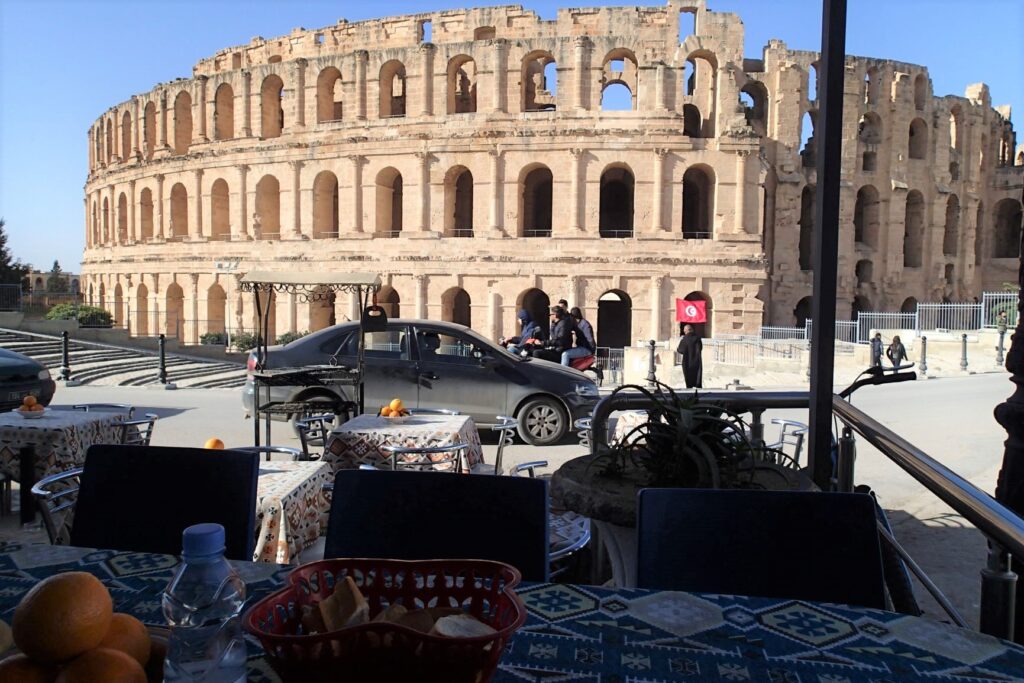
Regardless of the fact that you’re 1800 years too late to enjoy a display of bloodsports, the El Djem Colosseum is still a fascinating place to visit.
For more on the El Djem Colosseum click here
If you enjoyed this post, you may also enjoy Driving in Tunisia, El Djem Archaeological Museum
Leave a Reply